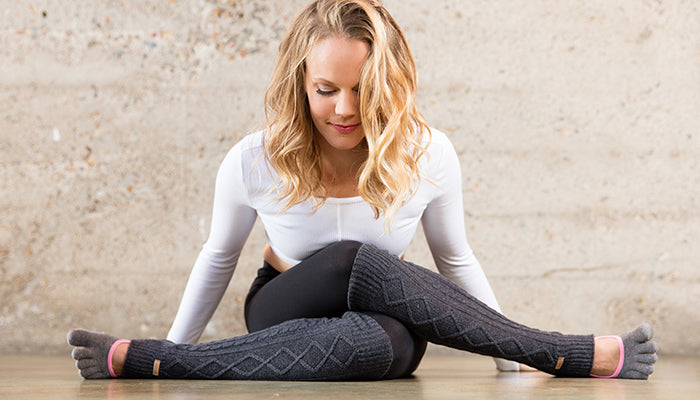New Arrivals
Beginner’s Guide to Yoga
 This is for all the beautiful beginners to yoga. Welcome! Starting something new is, well, new. That means there are a lot of unknowns. The best part about being a yoga beginner is that you get to explore everything for the first time without expectations. It can be both exciting and overwhelming which is why we’re offering several tidbits we found helpful when we first started.
This is for all the beautiful beginners to yoga. Welcome! Starting something new is, well, new. That means there are a lot of unknowns. The best part about being a yoga beginner is that you get to explore everything for the first time without expectations. It can be both exciting and overwhelming which is why we’re offering several tidbits we found helpful when we first started.
Before Class
- Let the teacher know you are new. Tell them about any injuries you have so they can help you modify poses.
- Wear comfortable clothes. We find that more form-fitting yoga pants and tops are easier to move in. Wear yoga socks to help keep feet in place.
- Arrive hydrated. Try not to eat at least two hours before class, as it’s hard to tuck in tight or hold poses when your stomach is full.
- Remove shoes when you step inside the yoga room.
- Observe silence or whisper (if you must talk)
- Don’t worry what others are doing in the class. Your yoga mat is a like a magic carpet – enjoy the journey of YOUR practice. Honor where you are. Push farther if you can or rest if that feels right. And remember, even the most advanced yogis choose Child’s Pose.
During Class
- Some instructors do hands-on adjustments (let them know if you prefer not to be adjusted). During an adjustment, the teacher helps with alignment so you can feel what the pose should feel like. Sometimes we don’t realize we aren’t aligned correctly and their adjustments are there to help guide or deepen the pose for you.
- Unfamiliar words might be used. Yoga is an ancient practice that uses an Indic language called Sanskrit. Each pose has a Sanskrit word. For example, Downward Facing Dog is Adho Mukha Svanasana. After several classes you will catch on to what the words mean. Until then, follow along with the teacher or your yoga mat neighbor. To help you, here is a quick guide of words you might hear and what they mean:
- Adho = downward
- Asana = poseBaddha = bound
- Mukha = face
- Namaste = a respectful exchange meaning “the light in me sees and recognizes the light in you” (often said and repeated at the end of class)
- Parsa = side
- Prana = life force
- Shanti = peace
- Supta = recline/supine
- Ujayi = breath
- Urdhva = upward
- Vinyasa = flowing sequence
- Some yoga teachers begin and/or end class with a chant. If you’re new, you will not know what they are saying. Just listen and absorb the sound. Feel free to ask the teacher what they are saying. And then make a choice if you want to chant along next time or not.
- Yoga can make you sweat. If you find that your feet or hands slip on your sticky yoga mat, bring yoga socks and yoga gloves to help you stay in place. Slipping is distracting and you want to give the poses your full focus.
After Class
- Every yoga class typically ends with Shavasana (shava = corpse, asana = pose). You lie on your back and letting the breath settle in. In these last quiet moments you might be thinking about getting back to your day and all of the things you need to do. Try to silent these thoughts by repeating a mantra or focus on your breath.
- Avoid jumping up and leaving class. Give your body and mind time to come out slowly. How you end class is just as important as how you start it.
- Don’t talk while others are in Shavasana. Wait until you leave the yoga room to chat.
- Honor the time you spend on your yoga mat. Send yourself, the teacher and others gratitude for being part of the energetic experience.
 Skip to content
Skip to content































